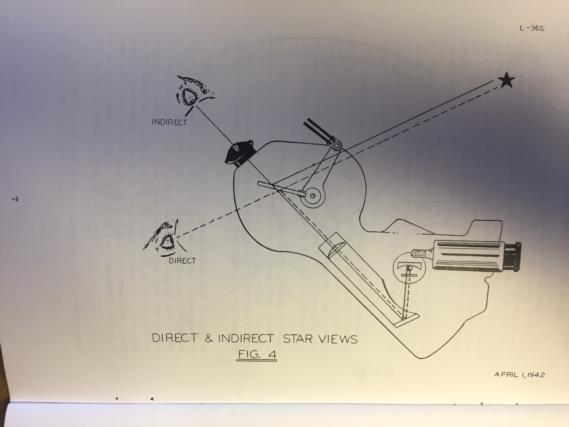
NavList:
A Community Devoted to the Preservation and Practice of Celestial Navigation and Other Methods of Traditional Wayfinding
From: Paul Dolkas
Date: 2018 Jun 6, 18:00 -0700
David-
The A-12 had a different type of light path than the Kollsman – you don’t view the star through the cell (see attached). Rather than using a mirror to reflect the light up into the cell from below, you could use a prism to bend it down to view the cell from above. Placing the lamp behind the cell would give you a dark circle against a bright background. So it could be done.
But you’re right about the effect of dust or any other contamination. Maybe a better idea than a solid BB would be a drop of mercury inside an oil filled cell. Depending on the viscosity of the oil, you could get some nice damping against vibration without it being too “slow”. You wouldn’t have to worry about the fluid eventually evaporating either.
One of the other reasons I chose the pendulum in my project was that you don’t have to be limited to a circle for the reference. I would much prefer the Kollsman’s combination of a line or reticle pattern and a circle to the Link’s bubble.
-Paul Dolkas
From: NavList@navlist.net [mailto:NavList@navlist.net] On Behalf Of David Pike
Sent: Wednesday, June 06, 2018 12:46 PM
To: paul@dolkas.net
Subject: [NavList] Re: Ebay kollsman periscope sextants
Maybe a better design solution would have been to use an inverted chamber with an appropriately sized ball bearing on the bottom, rather than a bubble on top. Paul Dolkas
A fewslight problems here Paul. Normally, you require a transparent bubble, so you can see stars through it. No light will travel though a ball bearing (bb).
Then you’d still need a collimating lens to focus the bb at infinity like the Sun and stars.
After that, the radius of the ball dish would have to equal the focal length of the collimating lens, so the Sun & bb kept in line without the need for fiduciary marks when the sextant was tilted in the direction of viewing. Therefore, the dish would be very shallow. Could you get a bb smooth enough to move freely on such a shallow dish? A spot of dust and oops! I’ve no doubt there’d be other problems as the experts will no doubt tell us.
With a pendulous reference sextant the graticule is frequently on a transparent disc dangling on a quartz thread suspended in a suitable fluid. It amazes me how you can lay them on their side occasionally without damaging them (well maybe that’s why my index errors keeps changing!). DaveP







